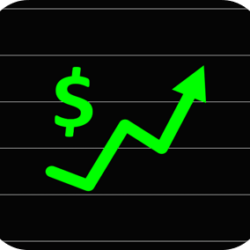Lagging Indicators
What is lagging indicator in stock trading?
&
Pros & Cons of lagging indicators
Stock trading can be a complex and confusing process, especially for beginners. One of the main challenges for traders is to determine the future performance of a stock based on its past market trends and data. To help traders make informed decisions, technical analysis tools such as lagging indicators have been developed. In this blog post, we will take a comprehensive look at what lagging indicators are, how they work, and their pros and cons in stock trading.
What are Lagging Indicators?
Lagging indicators are a type of technical analysis tool used to help traders determine the future performance of a stock based on past market trends and data. They are called “lagging” because they follow the trend of the market, rather than predicting it. This means that lagging indicators only provide information on the stock’s past performance, which can be used to make predictions about its future performance.
How do Lagging Indicators Work?
Lagging indicators work by analyzing past market data and trends to determine the overall direction of the market. Some of the most common lagging indicators include moving averages, Bollinger Bands, and trend lines. These indicators use mathematical algorithms to determine the average price of a stock over a certain period of time, and then plot this data on a chart to create a visual representation of the stock’s performance. By analyzing this data, traders can determine the overall trend of the stock and make predictions about its future performance.
Pros of Using Lagging Indicators in Stock Trading
Clear Picture of Past Market Trends and Data: One of the biggest advantages of using lagging indicators is that they provide a clear picture of past market trends and data, allowing traders to make informed decisions. This information can be used to determine the strength of a trend, which can help traders to determine the best time to enter or exit a trade.
Sense of Market Momentum: Lagging indicators also give traders a sense of market momentum, helping to determine the strength of a trend. For example, if a stock’s price is consistently rising over a certain period of time, it can be assumed that the stock has a positive momentum and may continue to rise in the future.
Accessible for Traders of All Levels of Experience: Another advantage of lagging indicators is that they offer a simple and straightforward approach to analyzing market data, making it accessible for traders of all levels of experience. Even traders who are new to technical analysis can use these indicators to make informed investment decisions.
Cons of Using Lagging Indicators in Stock Trading
Based on Past Data: One of the biggest limitations of lagging indicators is that they are based on past data, so they may not accurately predict future market trends. This means that traders must use these indicators in combination with other analysis techniques to get a complete picture of the market.
False Signals in Choppy or Non-trending Markets: Another limitation of lagging indicators is that they can provide false signals in choppy or non-trending markets. In these types of markets, stock prices can fluctuate rapidly, making it difficult for lagging indicators to accurately predict future performance.
Slower in Detecting Changes in Market Trends: Lagging indicators tend to be slower in detecting changes in market trends compared to leading indicators. This means that traders may miss out on potential opportunities if they rely solely on lagging indicators to make investment decisions.
Conclusion
Lagging indicators can be a useful tool for stock traders when used in combination with other analysis techniques. However, traders must be aware of the limitations of these indicators and use them wisely in order to make informed investment decisions.
Share Predictions mobile app provides variety of technical indicators in the form of lagging indicators, including Bollinger Bands, for both common stocks and ETFs from stock markets in USA. You can view and analyze trends on the chart and easily identify potential bullish and bearish signals based on these indicators when doing your technical analysis.





